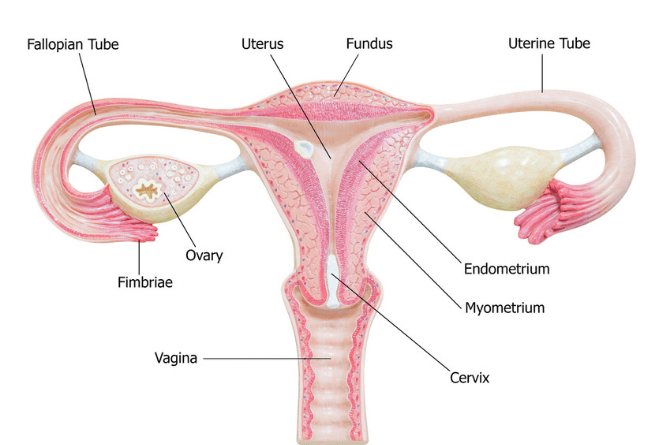
Definition of a congenital absence of uterus &vagina (MRKH)
Mayer-Rokitansky-Küster-Hauser (MRKH) syndrome, also referred to as Müllerian aplasia or congenital absence of the uterus and vagina, is a congenital disorder characterised by agenesis or aplasia of the uterus and upper part of the vagina in females with a normal female karyotype (46,XX). The external genitalia appear normal and the patients typically have a normal reproductive endocrine function and reach puberty showing normal signs of thelarche and pubarche. Patients typically present with primary amenorrhea during adolescence and MRKH syndrome has been reported in ~ 16% of patients with primary amenorrhea, thus considered the second most common cause hereof after ovarian failure.
During the last decade several advances have been made in MRKH syndrome research, especially within the fields of genetics, non-surgical management, and uterus transplantation as the first available fertility treatment. The symptoms are primary amenorrhea and sexual dysfunction.
The female reproductive tract in humans includes the oviducts (Fallopian tubes), uterus, cervix and vagina. The oviducts, uterus, cervix, and upper two-thirds of the vagina originate from the paramesonephric (Müllerian) ducts (PMD), whereas the lower part of the vagina originates from the urogenital sinus. Formation of the PMD starts around 5th–6th gestational week as bilateral craniocaudal invaginations of the coelomic epithelium of the urogenital ridges (intermediate mesoderm) growing caudally guided by the mesonephric (Wolffian) ducts to reach the urogenital sinus (endoderm). The caudal part of the two PMDs fuses to form the uterus, cervix and upper vagina, whereas the upper parts of the PMDs form the two oviducts. MRKH syndrome is caused by either complete agenesis or aplasia of the PMDs to form the uterus and upper vagina.
Diagnosis of MRKH
Patients with MRKH syndrome typically present during adolescence with primary amenorrhea defined as absent menstrual periods at the age of 16 following normal puberty and development of secondary sex characteristics. Other complaints at referral include dyspareunia/apareunia and (cyclic) abdominal pain. Finally, patients (typically younger children) may be referred after an incidental finding of vaginal or uterus agenesis, but if examined by imaging at young age such findings may be false interpretations of the prepubertal uterus. Median age at referral has been reported to be 17.5 years
- Colposcopy
- Vaginal four-dimensional colour ultrasound
- electrochemiluminescence endocrinology analysis
- Chromosomal analysis
Treatment of MRKH Syndrome at Antai
With the advancement of medicine and the understanding of MRKH, we have identified that the tissues that make up the mucosa and muscles of the uterus and vagina canal (including tissues that make up the myometrium, endometrium, parts of the cervix, fundus, mucosa of vaginal canal etc), are actually present within the pelvic cavity, simply “misplaced”. Due to this, we no longer need to rely on graft tissues to reconstruct the absent uterus and vaginal canal. Upon the full reconfiguration and reconstruction of the uterus and vaginal canal, MRKH patients can menstruate normally, experience healthy sex lives. After the surgery, you will be able to observe a normal, fully-functioning uterus.